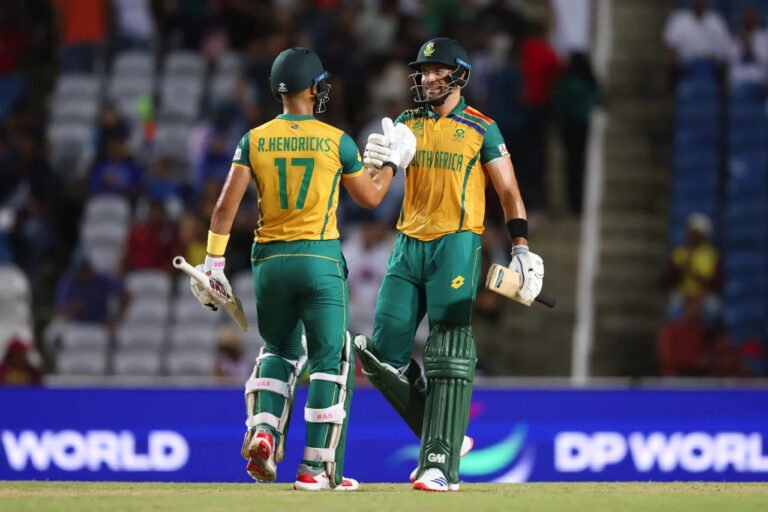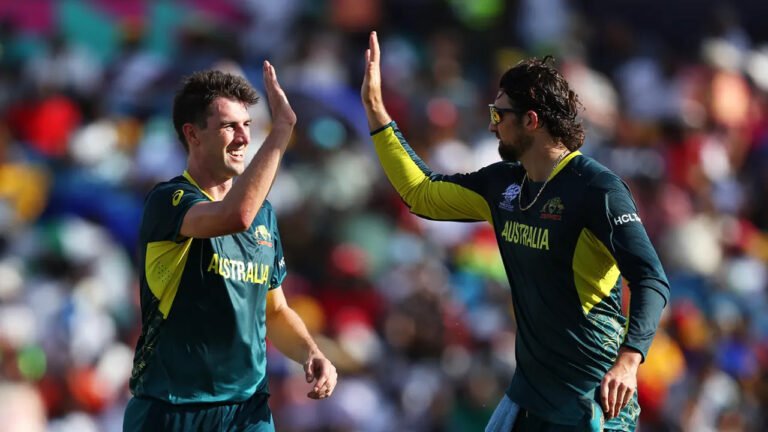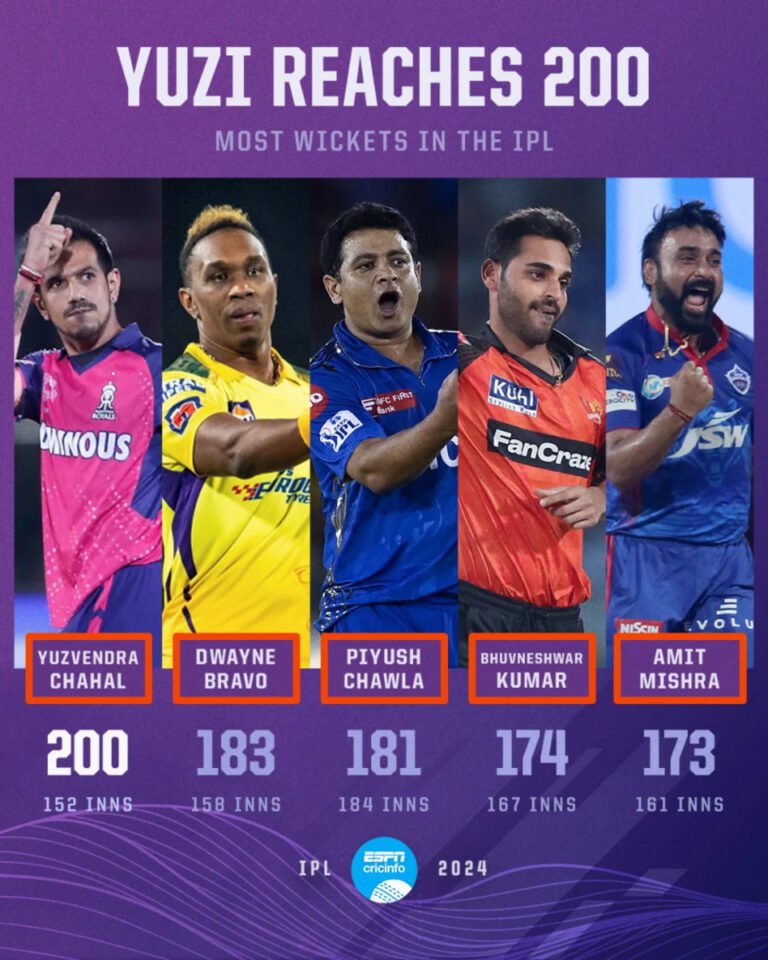Sachin Tendulkar’s Historic 200 Leads India to Series Victory
Sachin Tendulkar’s monumental 200 not out propelled India to a series-clinching victory over South Africa.
This historic feat, achieved in the first innings at Gwalior, marked the first-ever double century in ODIs, cementing Tendulkar’s legacy as one of cricket’s finest.
Sachin Tendulkar made history in the first innings of the Gwalior match by becoming the first player to reach 200 in One-Day Internationals (ODIs). South Africa were never in the hunt and finally lost by 153 runs.
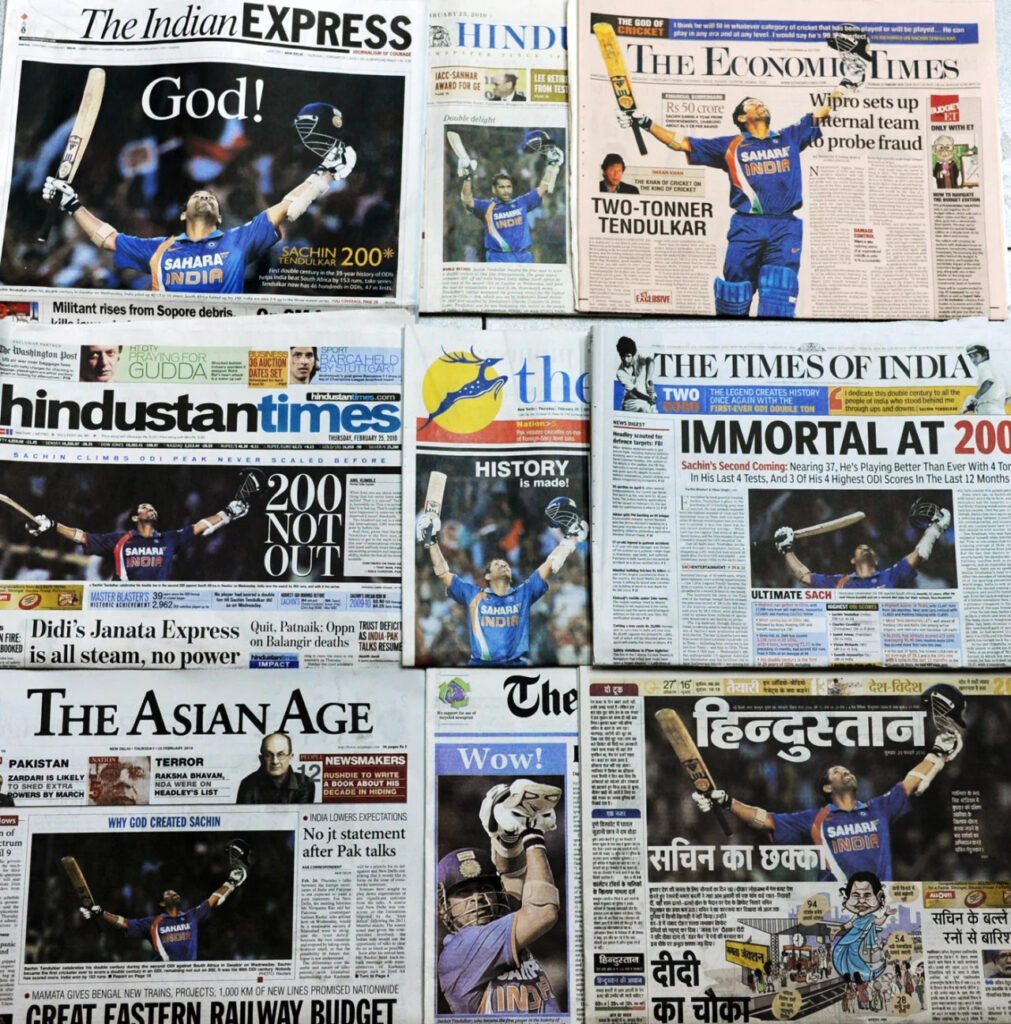
South Africa 248 (de Villiers 114, Sreesanth 3-49, Pathan 2-37) lost to India 401 for 3 (Tendulkar 200*, Karthik 79, Dhoni 68*) by a margin of 153 runs.
It was well worth the over 40 years of waiting. After smashing the record for the highest score and setting the first double-hundred in ODI history, Sachin Tendulkar selected one of the stronger bowling assaults available.
Cricket fans were envious of the spectators at the Captain Roop Singh Stadium as they watched one of the nation’s favorite athletes produce an incredible innings that not only set up a 153-run rout but also the series victory. Even though he was cheaply run out in the last game, nothing, not even fielders, bowlers, mishaps, or cramping, could stop him today. Yusuf Pathan, MS Dhoni, and Dinesh Karthik watched in awe as the maestro executed every stroke in his arsenal.
Tendulkar is 36 years old, and he hasn’t shown any symptoms of aging. His brilliant touch in both formats of the game has eliminated any chance that he will retire anytime soon. Batsmen who have been pushing themselves beyond the 200-mark have been prevented from doing so by exhaustion, cramping, and time constraints.
After reaching 150, Tendulkar did experience cramps, but he chose not to use a runner. Throughout this historic innings, his twenty years of international expertise came into play. He remained at the crease from the first ball to the last, never once losing concentration. His innings was immaculate, no opportunities presented, no catches lost.
He must have had a lot of feelings going through his head as he got closer to each record, but he made sure he never lost sight of the present. He was still dashing between the wickets as quickly as he had begun the innings. He was going to be put to the test by the humidity in Gwalior, but he played above it all, toying with the bowling with a combination of casualness and raw might.
To say that Tendulkar gently acknowledged his achievement would be an understatement. In the 46th over, he broke the record for the highest ODI score, surpassing the 194 set by Pakistan’s Saeed Anwar and Zimbabwe’s Charles Coventry with a flick for two past short fine-leg.
Also Read: Reliving the 2011 Cricket World Cup Final: India’s Triumph Led by Dhoni and Gambhir
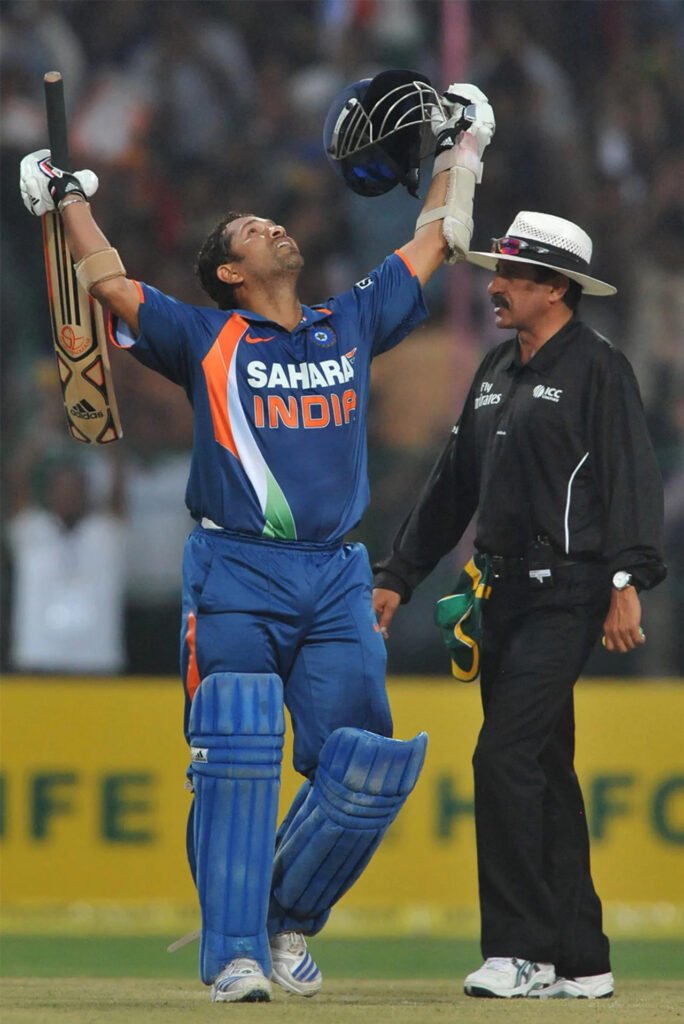
To say that Tendulkar gently acknowledged his achievement would be an understatement. In the 46th over, he broke the record for the highest ODI score, surpassing the 194 set by Pakistan’s Saeed Anwar and Zimbabwe’s Charles Coventry with a flick for two past short fine-leg. He held off on celebrating until he achieved the magical 200, which he did in the last over after Charl Langeveldt hit a squirt past backward point. It seemed appropriate that the top run-scorer in one-day cricket should hit the milestone after he lifted his bat, removed his helmet, and gazed up at the sky.
Although Tendulkar produced some of the best strokes of his innings, his true brilliance was demonstrated by a single shot that could have dismissed even the greatest bowler in history.
To keep him quiet, Dale Steyn hit three deliveries outside off with a ball in the block-hole during the first over of the batting Powerplay, which was taken in the 35th over.
Needing to come up with something quick, Tendulkar strode straight across his stumps and casually flicked him across the line, leaping in his crease on one leg to split the opening at midwicket. Helpless, Steyn just shook his shoulders as he watched the ball fly away. It was pointless to look for reasons why that shot was so bold or to express anger about it. For the bowlers, it was just that kind of afternoon.
His shots weren’t the only thing that caught people’s attention. At the beginning of his innings, his placement and timing were his strongest points. He was able to deliver complete deliveries past the covers and off his pads on a road surface that gave the bowlers no margin for mistake. Jacques Kallis removed the slips and positioned them in catching positions inside the 15-yard circle, attempting to force an error, as there was no seam movement available.
However, Tendulkar outperformed them all, creating space to maneuver it past several green shirts. Every time the ball was put wide of them, there were at least two runs available, and the swift outfield took care of the rest.
The level pitch and short boundaries were too alluring once he got a good look. Virender Sehwag’s 11-run dismissal, caught at third man, was merely an exception as Dhoni, Pathan, and Karthik exchanged golf clubs for cricket bats. Never before had driving and lofting through the line been so simple. In his sleep, Tendulkar could have drove them completely insane.
Even while the two century stands—one with Dhoni and the other with Karthik—might not leap out on the scorecard, they were crucial foundational moments. In their 194-run stand, Karthik skillfully rotated the strike, hammered three straight sixes, and contributed to his best-ever performance. The South Africans were warned that they were in for a huge deal by that collaboration. When you included Dhoni’s brutal hits and scoops, your score was well over 400.
Tendulkar took 37 balls to get his fifty, and 90 balls to reach his century. Strangely, he was on 111 when he hit his first six—over long-on. As India scored 63 runs in the batting Powerplay, Pathan hammered away at the other end, smashing full tosses and short deliveries in his 23-ball 36.
The error committed by the South African seamers was trying to bowl too quickly, which led to an excessive number of full deliveries and tosses being thrown down. Tendulkar, who was seeing it like a beach ball, chose the gaps, created space, and experimented as the unplayable yorkers continued to elude him.
Making space for Parnell, he chipped him over midwicket with a straightforward bat twist at point of contact to reach his 150. As he reached that number again, the agony of Hyderabad, where his brilliant 175 all but won India the match against Australia last year, must have stayed in his mind. After a massive six-over long-on, he not only surpassed Kapil Dev‘s 175 but also appeared certain to smash his personal record. Even when he began to show signs of cramping by holding his thighs, he was unstoppable today.
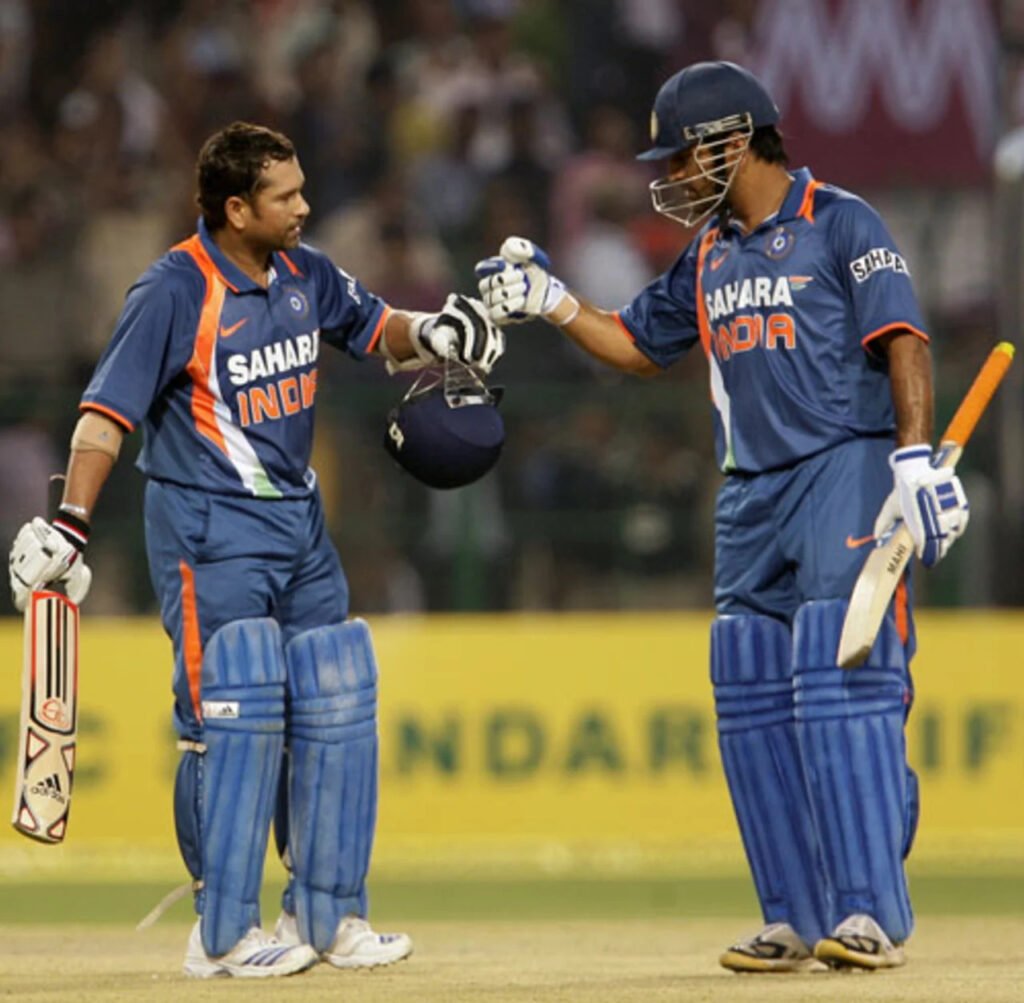
With a lollipop of a full toss off Kallis, he equaled his highest score of 186 and shattered both his personal and India’s record with a single to square leg. Fortunately, Dhoni bullied his way to a 35-ball 68, smashing four sixes, so he didn’t have to do much jogging and could finally enjoy being a spectator. The weary audience still had enough vocal chords left to encourage Dhoni, whose bottom-hand is currently the strongest in the game.
The crowd was eager for Tendulkar to score a stroke because the record of 200 had not yet been reached. In the 49th over, Dhoni took Steyn for 17 runs and held the strike for the 50th. He hit the opening ball of the fiftyth wicket for six before shovelling a full toss to deep midwicket, where Hashim Amla made a great save.
The audience was up and cheering as Tendulkar made history by settling for a single. It was especially appropriate because it was on this day in 1988 that he and Vinod Kambli added a massive 664 in a school match, setting a world record at the time.
The 434-chase at the Wanderers, when South Africa seized the lead due to a partisan crowd and possible psychological and physical shock following the attack, was not going to happen again. AB de Villiers’ aggressive intensity was entirely obscured by the pursuit, and South Africa was reduced to mere spectators. The only question was how fast India could finish it.
Within the first fifteen overs, Herschelle Gibbs, Hashim Amla, Roelof van der Merwe, and Jacques Kallis were all dismissed for cheap runs. De Villiers amassed 13 fours and two sixes while cruising at a pace faster than a run-a-ball. To gather 200 men, South Africa needed nine men’s services; for India, one man was enough.
Tendulkar‘s dismissal was compared to Brendon McCullum’s explosive 158 in the Bangalore IPL opening two years prior. The game was not a competition, but rather an exhibition of individual skill. While these kinds of games have their place, more bat-and-ball matches are necessary for one-day cricket to thrive as a whole.

